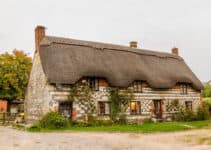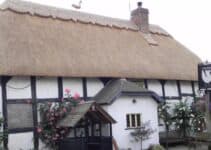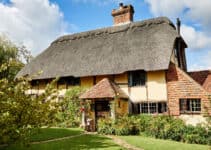When most people think of thatched roofs, they think of old-world European cottages, like on the cover of a fairy tale book.
But it’s actually a very common type of roof for buildings all over the world, and it’s not just there for decoration.
The first thing to understand about thatched roofs is their appearance. Most commonly, they have a very thick, puffy appearance, or even an uneven look with some parts looking flat.
This is because the roof is made from natural materials, like reeds or grasses.
There are many advantages to a thatched roof including its high desirability for its beauty and its eco-friendliness. However, there are disadvantages too. This article will look at some of the common problems associated with a thatched roof.
We are not being naysayers at all, but it is important to get a balance.

What Are The Disadvantages of a Thatched Roof?
There are a number of common issues associated with having a thatched roof.
If you are looking to buy a chocolate box cottage complete with a thatched roof, you need to go into the purchase with your eyes open or you can find your starry eyes soon become blurred and unfocussed at the sight of all the unforeseen bills coming in.
Fire Risk
You probably have heard about the flammability of thatched roofs. This is one of their biggest issues. While houses with thatch roofs are statistically no more prone to catch fire than houses with another type of roof, when these houses burn, they tend to rapidly burn with often devastating results.
As a consequence, the home buildings and contents insurance for these beautiful buildings is much higher. Your insurer will also insist you take certain precautions including having your chimney swept at least twice a year and regular roof maintenance.
You also will not be able to have a bonfire or barbecue in your garden, and each Bonfire night you are likely to be even more nervous than the neighbour’s cats are about where each firework may or may not land.
Most insurers require you to have a fire extinguisher on each floor of the property, I recommend this cost effective extinguisher and fire blanket:
Listed Buildings Pains
There’s a reason why these beautiful houses are often listed buildings: so other people, not just your family, can enjoy them for generations to come.
However, whatever the Grade of Listed Building, whether it is Grade 1 or 2, it makes the house harder to sell, higher to insure, and costlier and way more time-consuming to repair. Be prepared for red tape and lots of it about what you consider to be the most simple of things.

If you ignore a certain stipulation or material, woe betides you, as you may have to rip everything down and start again. Don’t think this does not happen. We know people who it has happened to. Call it ridiculous but that IS what you sign up to.
Repairs and Maintenance
A thatched roof needs regular maintenance to remain in tip-top shape by a skilled craftsman. If left unattended, it can actually change shape! A stretched-out roof will sag at its center and form a cone shape over time.
Maintenance of a thatched roof cottage must be done at least annually with regular inspections in between to check for leaks, moss and algae, animals or insects.
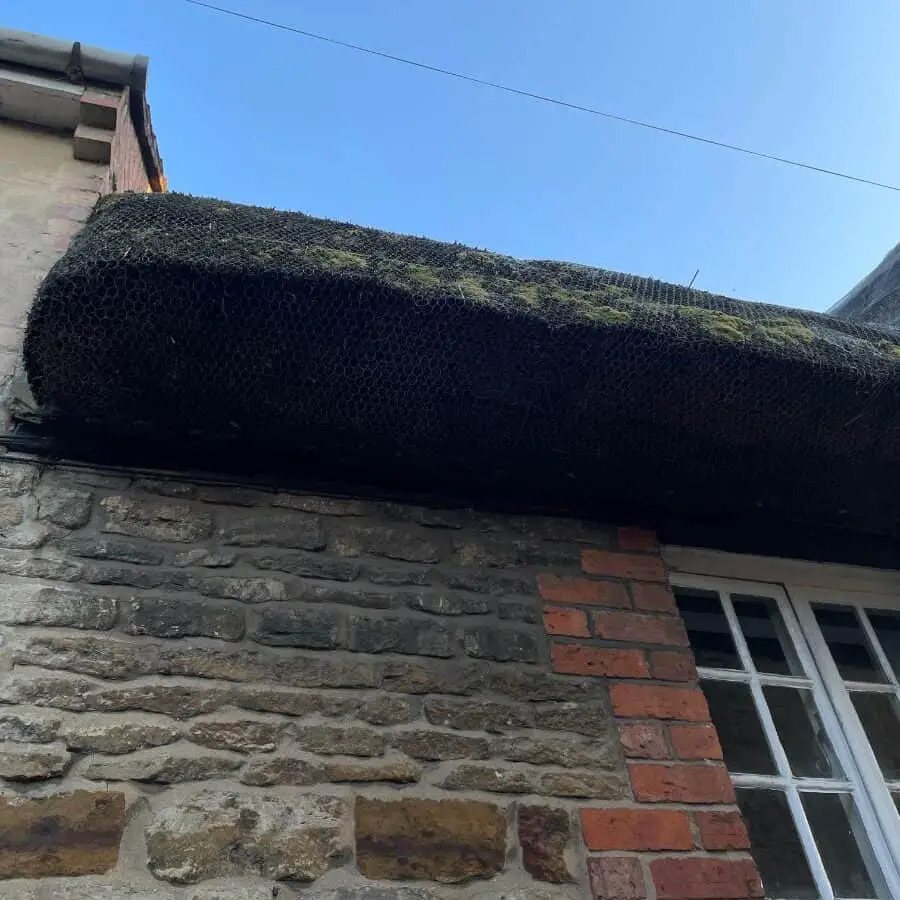
Not only will you regularly need to employ a professional to inspect and maintain your roof to strict standards as required by most insurers, but you will also have to get your chimney swept at least twice a year and other such things other normal cottage owners do not have to do.
Furthermore, if your building is listed, your repairs and maintenance will be even more expensive and time-consuming than for an unlisted thatched cottage.
Pests
The roof can attract all sorts of vermin from insects to mice. Not only can these cause damage to the roof if left untreated, but they can be a potential health hazard.

I had to invest in this alarm to keep the birds away after attacking my roof:
Limited Buyer Pool when Selling
However appealing your house looks, a thatched roof cottage is classed as being of non-standard construction. This means some banks will not lend on it.
The cold hard reality is that not all potential buyers will be able to get a mortgage, however much in love with it they are.
Also, while many buyers will love the idea of a dream cottage, other buyers will also run scared upon hearing it is a listed building and/or be afraid of the fire risk, etc. You are limiting your market when you buy thatch.
Are Thatched Cottages Hard To Sell?
In a world of cookie-cutter suburban homes and boring glass-and-steel skyscrapers, those quaint little houses with their thatched roofs and tiny shuttered windows look like a breath of fresh air.
They’re cute! They’re quaint! But do they sell?
While the buyer pool will be limited, as these houses are of non-standard construction making it harder to get a normal mortgage on, these homes are usually so desirable they hold their value and sell at a premium.
It really does depend though on the condition of the thatch. If it’s too badly damaged, you have no choice but to do a full renovation. The good news is that this kind of repair can increase a property’s value by 8% on average.
It can be hard to sell a thatched cottage, especially if the thatch is rotting and the thatch-layer is damp. In fact, it’s a common problem.
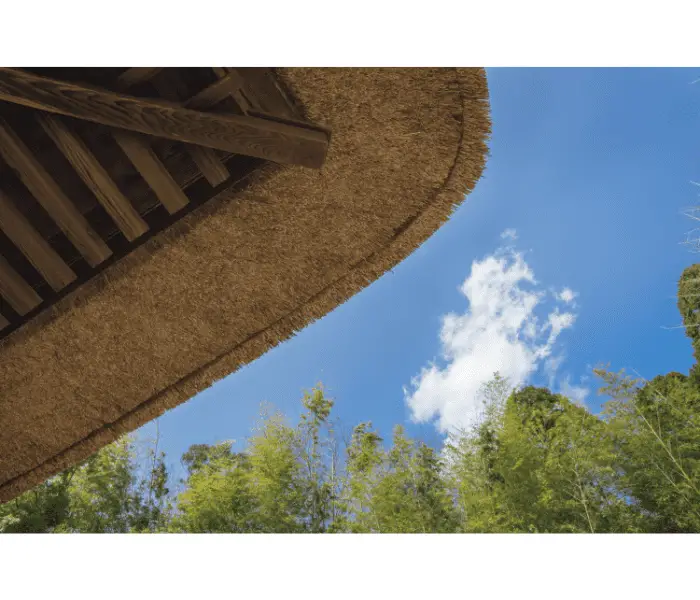
There are, however, some solutions to this problem. The first is to consult a professional about what needs to be done to make the thatch dry again.
This can be done by removing the damp layer or replacing it with a new one. It may also mean replacing the thatch layer altogether.
The second solution is effective but not ideal: covering the roof with plastic sheeting until the thatch dries out. This isn’t an option for people who live in their cottages because the plastic will trap moisture and cause mold growth.
You can get large tarpaulin here:
It’s also not ideal for people living in areas with harsh winters or lots of snowfall because they will have to constantly remove snow from the plastic and risk damaging it.
More commonly, people will opt for something in between these two solutions: repairing or replacing only parts of the thatch layer rather than all of it at once.
This allows them to catch up on maintenance issues as they arise and spread their expenses over time.
Problems With Thatched Roofs
Whether you like it or no problems with thatched roofs are the norm. Thatched roofing isn’t just a few centuries-old thing. It has been in existence for around 10,000 years. It’s been around a long time and will continue to be around a long time yet.
However, if you want to own a fairy tale thatched roof cottage you should be aware that for all its aesthetic benefits, it can be a headache to maintain.



